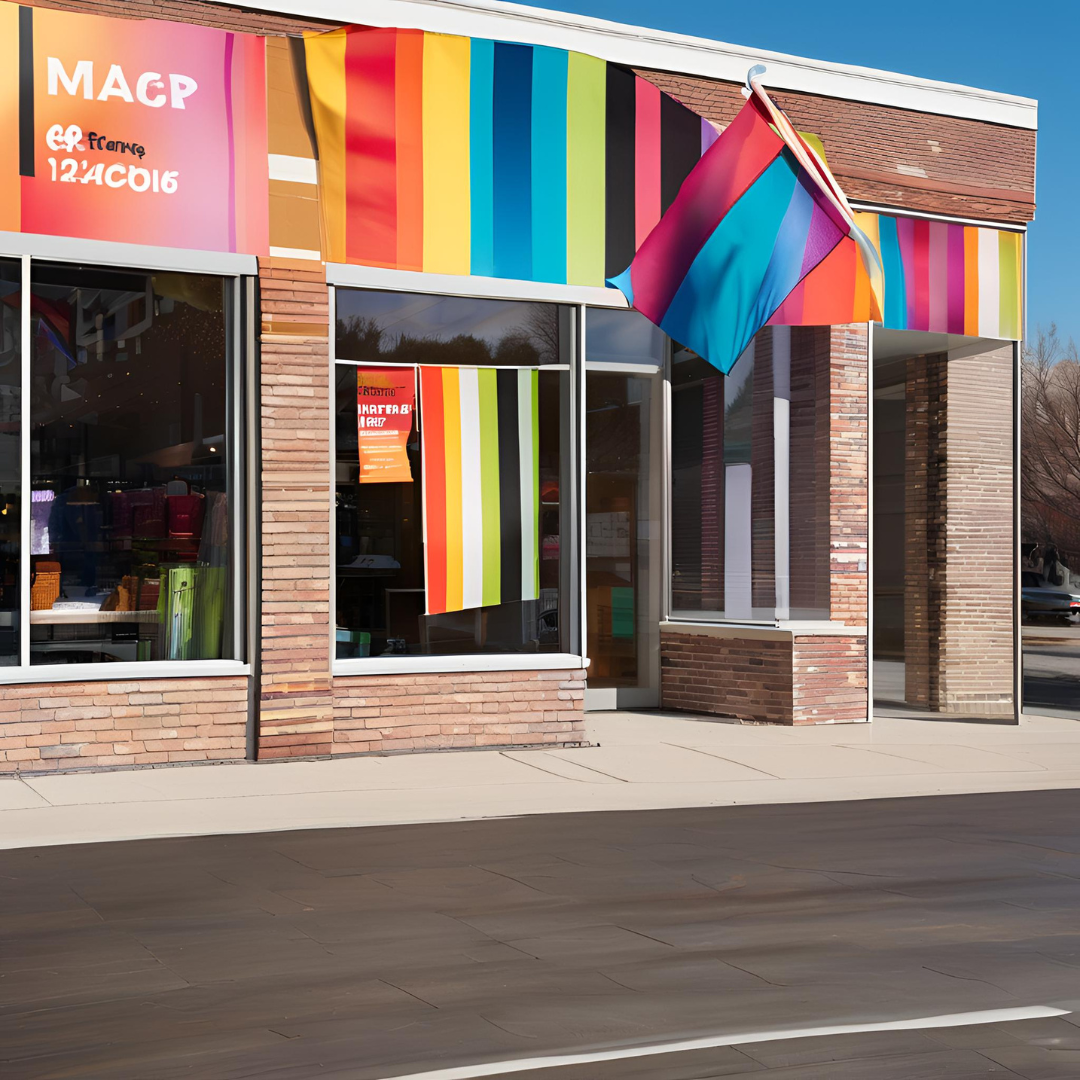Custom Flags: The Art of Flag Design for Captivating Customers with Creative Promotions
"Flags are not just symbols; they are stories told in fabric." - Unknown
Table of Contents
-
Introduction to Flag Design
-
The Influence of Colour in Flags
-
Shape and Size Matter
-
Typography and Imagery
-
Understanding Audience Appeal
-
Designing for Different Promotions
-
Incorporating Brand Elements
-
Eco-Friendly Flag Options
-
Choosing the Right Material
-
Flag Placement and Visibility
-
Testing and Feedback
-
Frequently Asked Questions
-
Conclusion and Next Steps

Introduction to Flag Design
Flags have been around for centuries, representing countries, organizations, and movements. But did you know they can also be a powerful tool for marketing? In the world of marketing, flags are an innovative way to capture attention and promote your business. This article explores how marketers, graphic designers, and small business owners can harness the art of flag design for creative promotions. Ensuring that your promotional flags are complete and intact upon delivery is crucial for maintaining a professional image and customer satisfaction.
Whether you’re launching a new product or hosting an event, flags can make a statement. This guide will walk you through the essentials of flag design, from choosing the right colours to incorporating your brand elements. By the end, you’ll understand how to create flags that not only draw attention but also leave a lasting impression.
Understanding the Power of Flags
Flags have been a powerful tool for communication and expression throughout history. They can convey a message, represent a brand or organization, and evoke emotions. In the context of business and marketing, flags can be used to promote a product, service, or event, and to create brand awareness. Promotional flags, such as those used at outdoor events, can be particularly effective in grabbing attention and generating interest.
Design Principles for Effective Flags
When it comes to designing a flag, there are several key principles to keep in mind. First, simplicity is key. A flag should be easy to read and understand, even from a distance. Second, color is crucial. Choose colours that are bold, contrasting, and suitable for outdoor use. Third, consider the shape of the flag. Different shapes, such as rectangular or triangular, can convey different messages and be more or less effective in different contexts. Finally, make sure the flag is durable and suitable for outdoor use, with high-quality printing and materials.
Types of Flags and Their Uses
There are many different types of flags, each with its own unique characteristics and uses. Country flags, for example, are used to represent a nation or country, while corporate flags are used to represent a company or organisation. Desk flags are small flags used on a desk or table, often to represent a company or brand. Flag banners are larger flags used to promote a product, service, or event. Branded flags are used to promote a specific brand or product, and can be used at outdoor events or in-store promotions.
Creating a Flag Design Strategy
When creating a flag design strategy, there are several key considerations to keep in mind. First, define the purpose of the flag. What message do you want to convey? What brand or organisation do you want to represent? Second, consider the target audience. Who will be seeing the flag, and what will they be looking for? Third, think about the context in which the flag will be used. Will it be used at an outdoor event, or in a store or office? Finally, consider the overall brand identity and how the flag fits into it.
The Influence of Colour on Flags
Colour is a critical element in flag design. It can evoke emotions and convey messages at a glance. When designing a flag for promotional purposes, consider the psychological impact of colours.
-
Red symbolises energy and excitement.
-
Blue conveys trust and professionalism.
-
Green represents growth and sustainability.
Choose colours that align with your brand and the message you want to communicate. Remember, the right colour combination can make your flag more memorable and effective.
Shape and Size Matter
The shape and size of your flag can significantly affect its visibility and impact. Traditional rectangular flags are common, but other shapes can make your design stand out.
-
Square flags for unique appeal.
-
Feather flags for dynamic movement.
-
Teardrop flags for a modern look.
Consider where your flag will be displayed and choose a size that ensures it will be seen, whether it's on a busy street or inside a crowded event.
Typography and Imagery
Typography and imagery are essential components of a compelling flag design. They need to be clear and bold, ensuring that your message is easily readable from a distance.
-
Use simple, sans-serif fonts for clarity.
-
Limit text to key messages or calls to action.
-
Incorporate images that resonate with your audience.
Correctly balancing text and imagery will enhance your flag's overall effectiveness, making it both informative and attractive.
Understanding Audience Appeal
Knowing your audience is crucial when designing promotional flags. Tailor your design to their preferences and cultural understanding.
-
Research demographic preferences.
-
Consider cultural symbols and meanings.
-
Align your design with customer values.
By understanding what appeals to your audience, you can create flags that resonate with them and encourage engagement with your brand.
Designing for Different Promotions
Flags can be used for a variety of promotional activities, each requiring a different approach.
-
Product launches need vibrant and bold designs.
-
Events may benefit from thematic or seasonal designs.
-
Sales promotions should highlight discounts or offers.
Adapt your flag designs to fit the specific promotion, ensuring they convey the right message at the right time.
Working with a Flag Designer or Manufacturer
When working with a flag designer or manufacturer, there are several key things to keep in mind. First, make sure to communicate clearly about your design goals and objectives. Provide any relevant branding guidelines, such as logos and color schemes. Second, ask about the manufacturing process and materials used. Make sure the flag is durable and suitable for outdoor use. Third, ask about the design process and how the designer will work with you to create a custom flag. Finally, make sure to review and approve the final design before production begins.
Incorporating Brand Elements
Your flag should reflect your brand identity. Incorporate brand elements to maintain consistency and recognition.
-
Use brand colours and logos.
-
Include taglines or slogans.
-
Maintain your brand's visual style.
A well-branded flag reinforces your company's image, making it instantly recognisable and memorable.
Eco-Friendly Flag Options
Sustainability is becoming increasingly important to consumers. Consider eco-friendly options when creating your promotional flags.
-
Use recycled materials for sustainability.
-
Opt for biodegradable inks and dyes.
-
Promote your commitment to environmental responsibility.
Eco-friendly flags not only appeal to environmentally-conscious customers but also position your brand as eco-aware.
Choosing the Right Material
The material of your flag affects its durability and appearance. Select materials that suit the intended use and environment.
-
Polyester for outdoor durability.
-
Nylon for vibrant colours.
-
Cotton for a classic look.
Choose a material that will withstand the conditions in which the flag will be displayed, ensuring longevity and sustained impact.
Flag Placement and Visibility
Where and how you display your flag can make all the difference in its effectiveness.
-
High-traffic areas for maximum exposure.
-
Eye level for better engagement.
-
Strategic lighting for night visibility.
Consider the placement carefully to ensure your flag captures attention and effectively promotes your message.
Testing and Feedback
Before finalising your flag design, test it with a sample audience. Gather feedback to refine the design.
-
Conduct focus groups for insights.
-
Use surveys to collect opinions.
-
Iterate based on feedback.
Testing ensures that your flag design resonates with your target audience and achieves the desired impact.
Frequently Asked Questions
How do I choose the right flag size for my event?
Consider the visibility and location. Larger flags work well for outdoor events, while smaller flags are suitable for indoor promotions.
What are the best materials for outdoor flags?
Polyester and nylon are ideal for outdoor flags due to their durability against weather conditions.
Can I use multiple colours in my flag design?
Yes, but keep the palette cohesive. Too many colours can overwhelm the design and dilute the message.
Conclusion and Next Steps
Flag design is an art that combines creativity, strategy, and understanding of your audience. By carefully considering elements such as colour, typography, and placement, you can create flags that captivate and convert.
Remember, a well-designed flag not only promotes your products and services but also enhances your brand's visibility and reputation. Take these insights and begin designing flags that tell your brand's story. For further assistance or design services, consider consulting a professional designer to bring your vision to life.
Happy designing and promoting!

